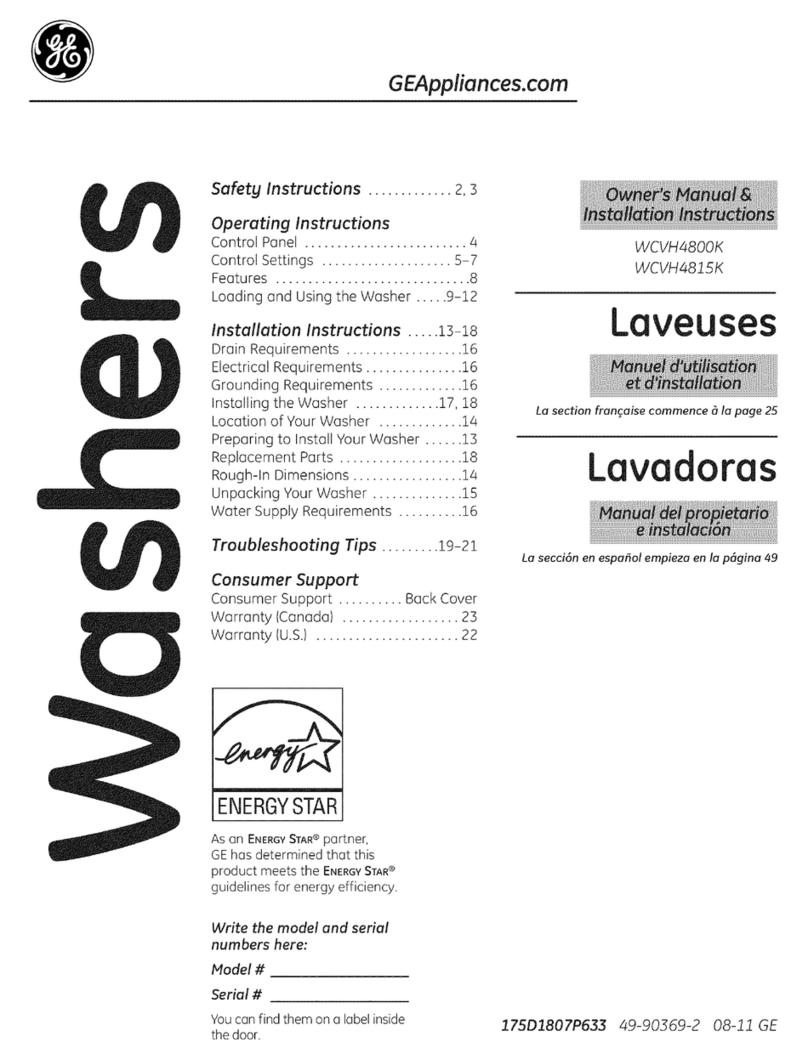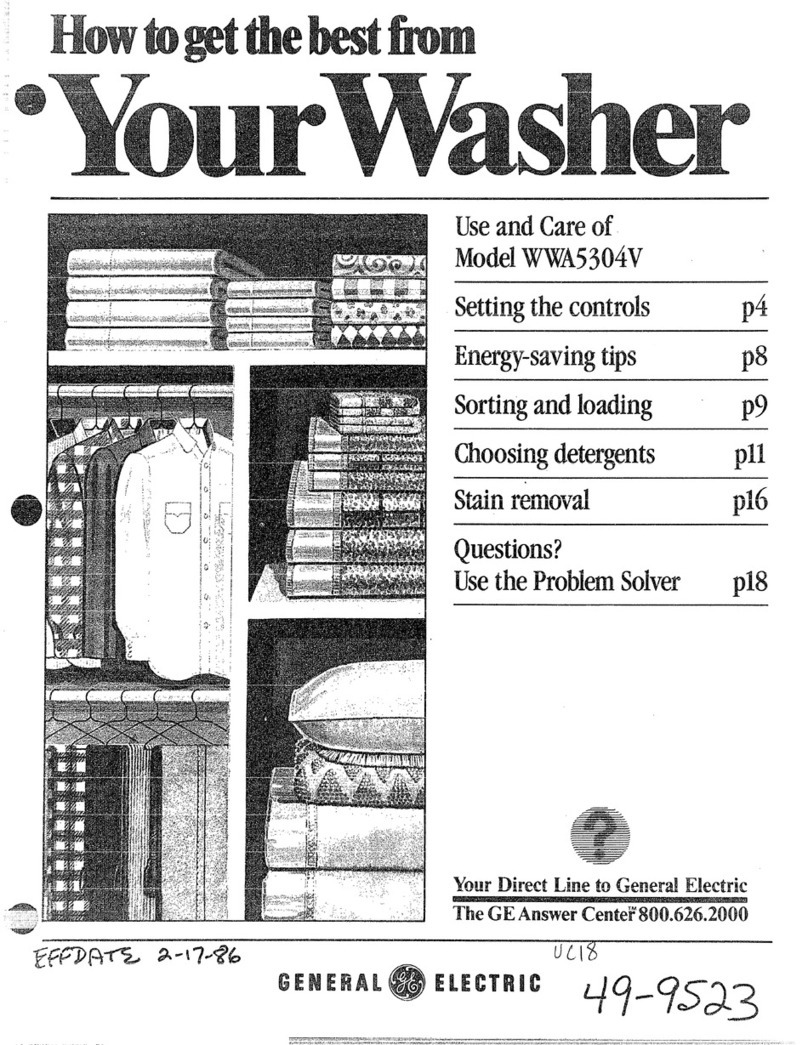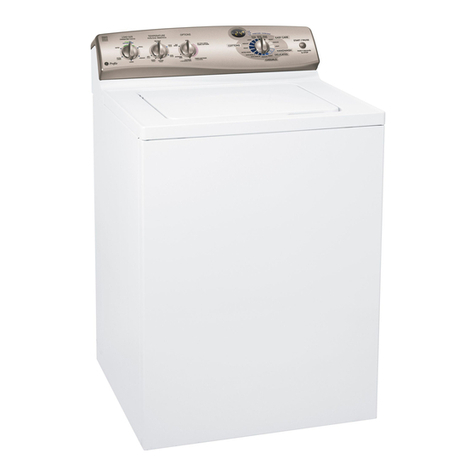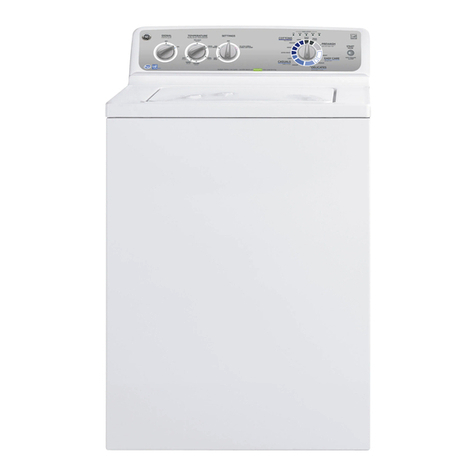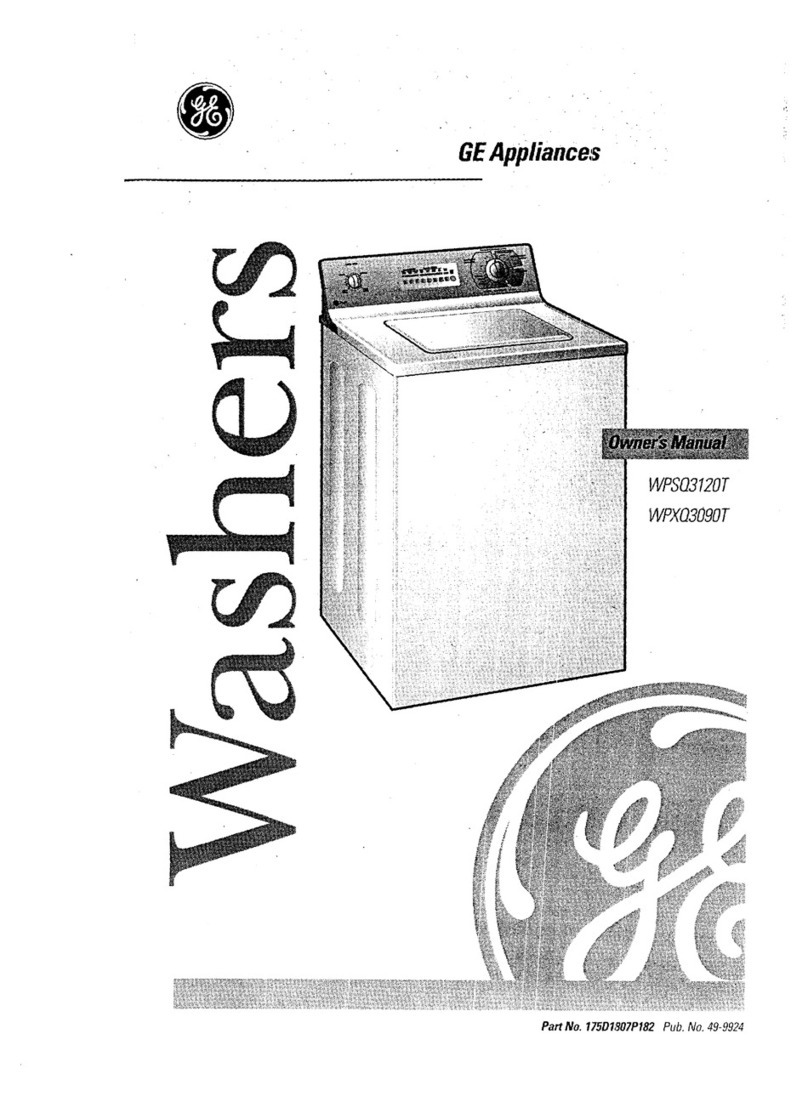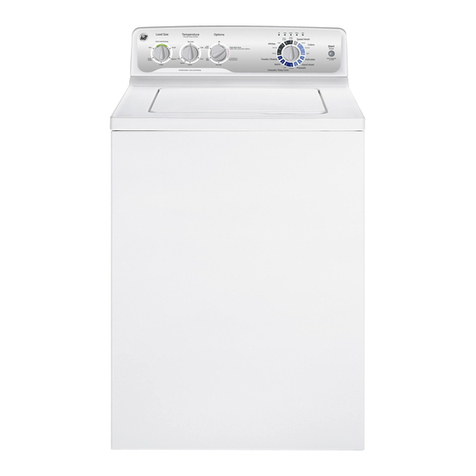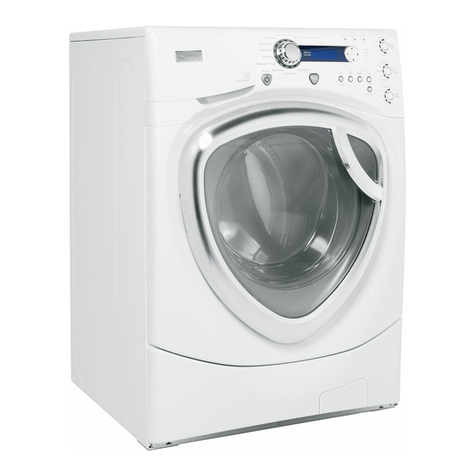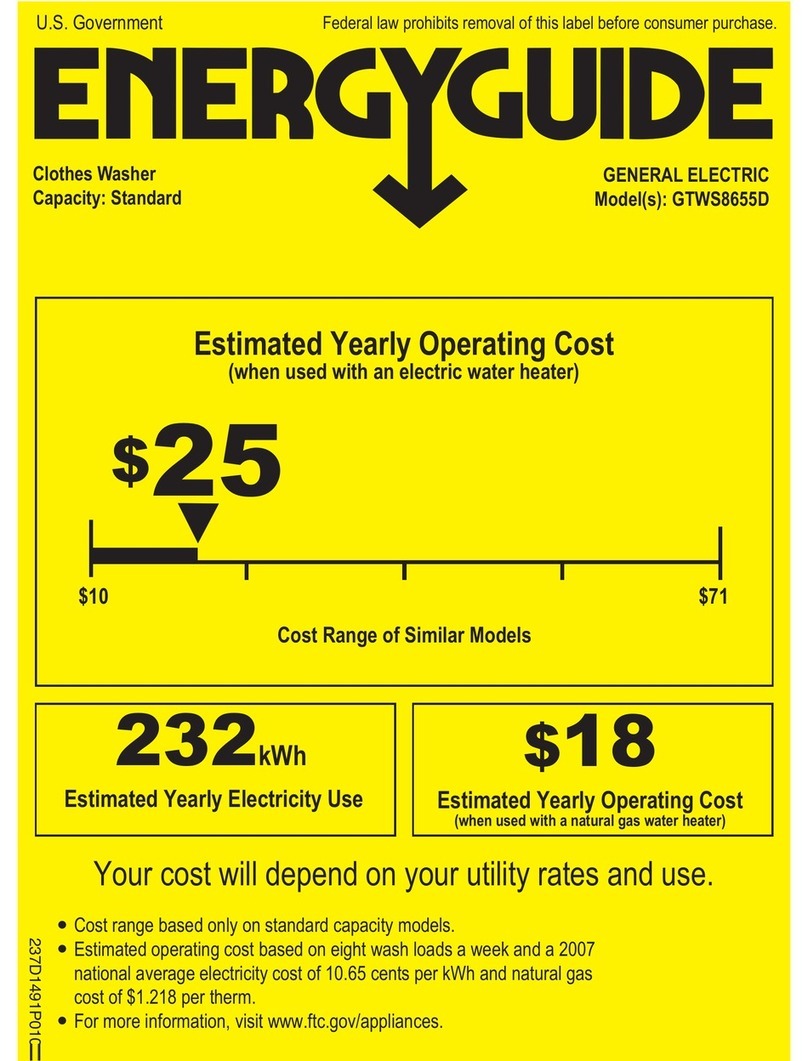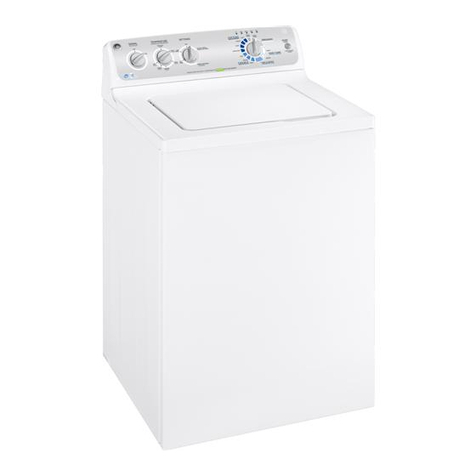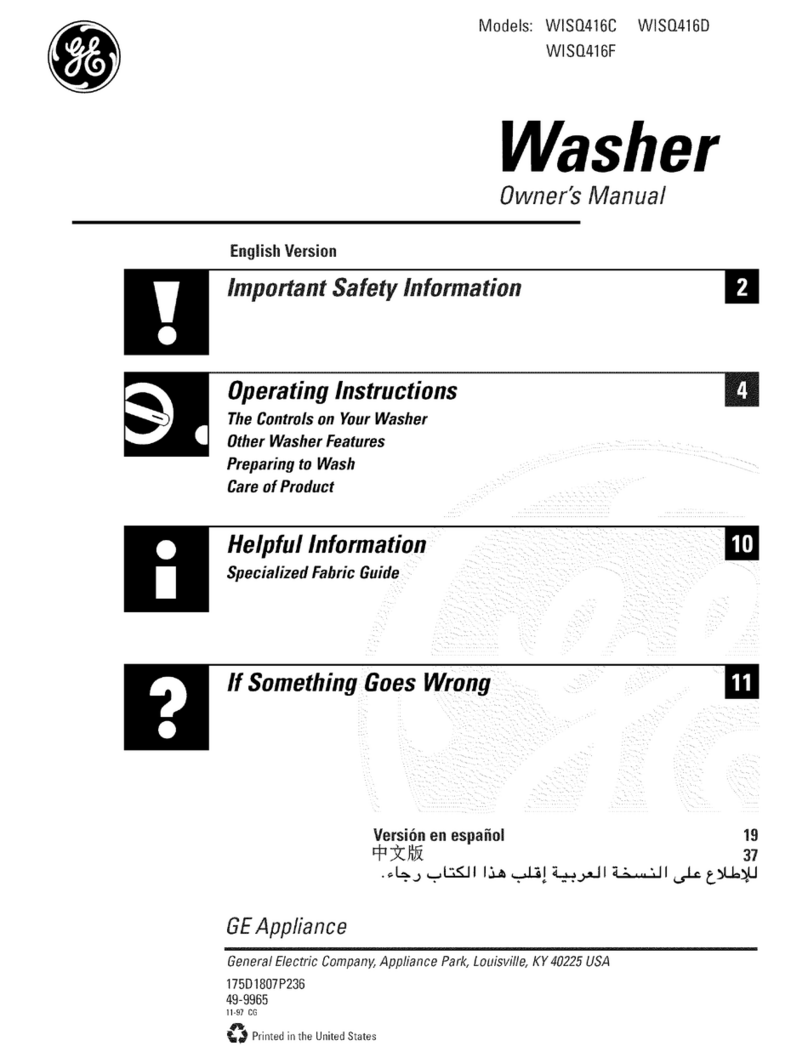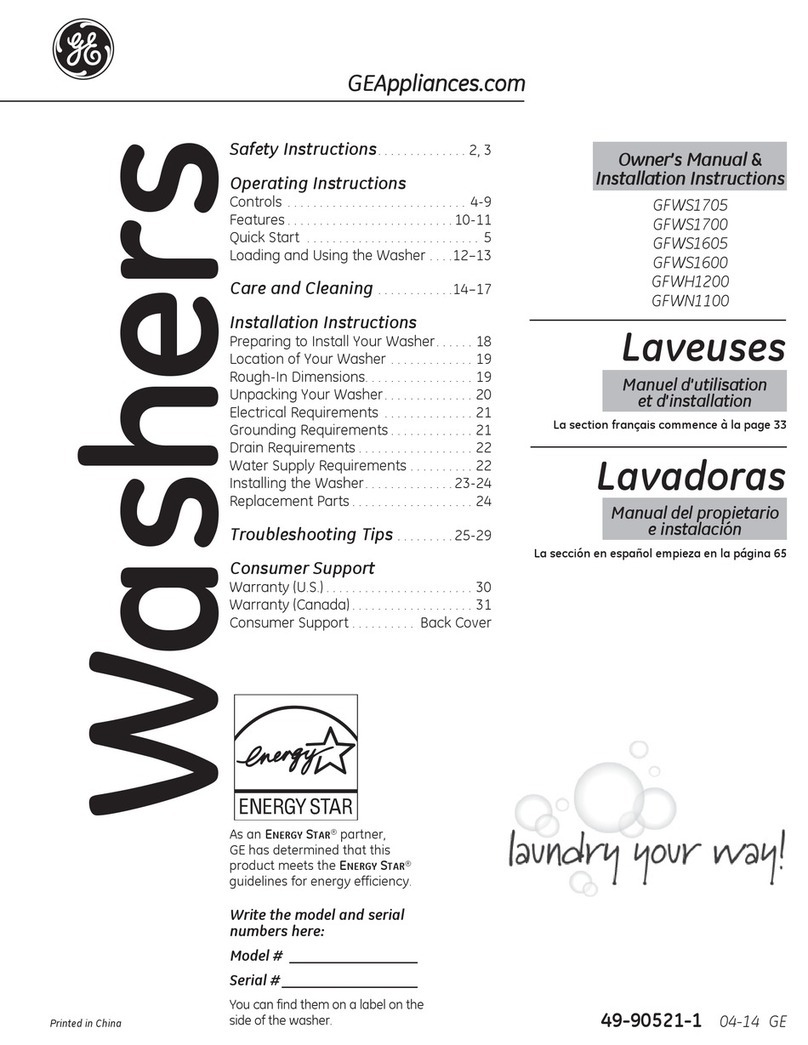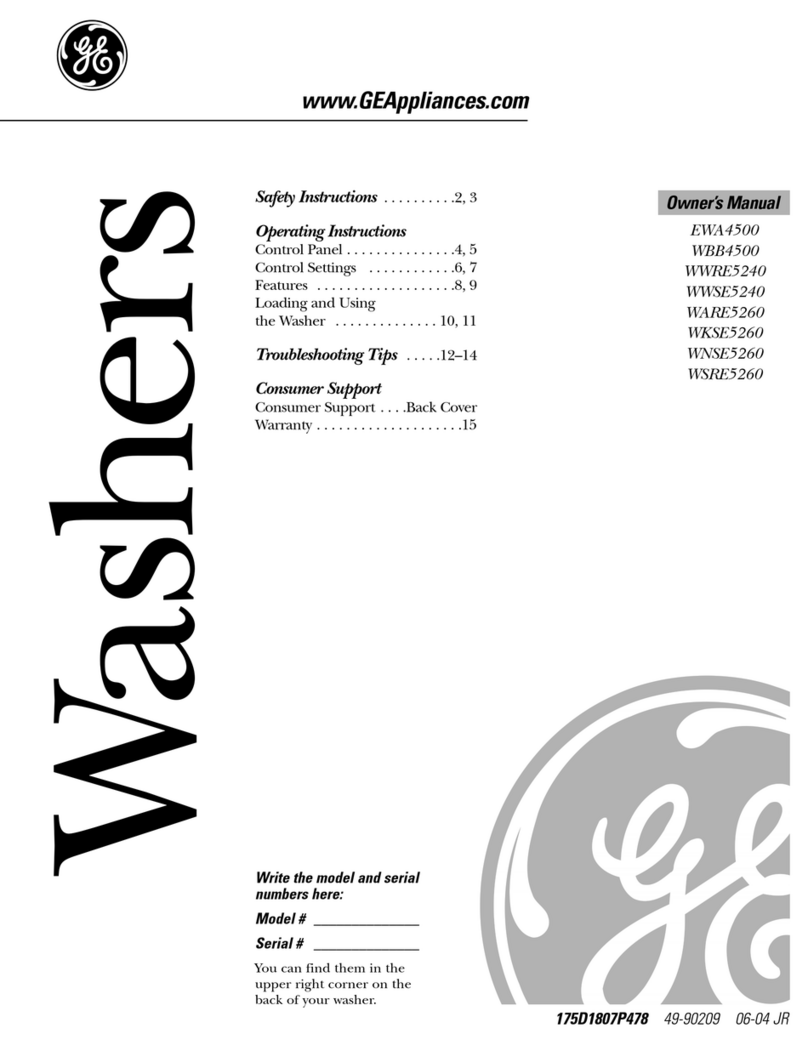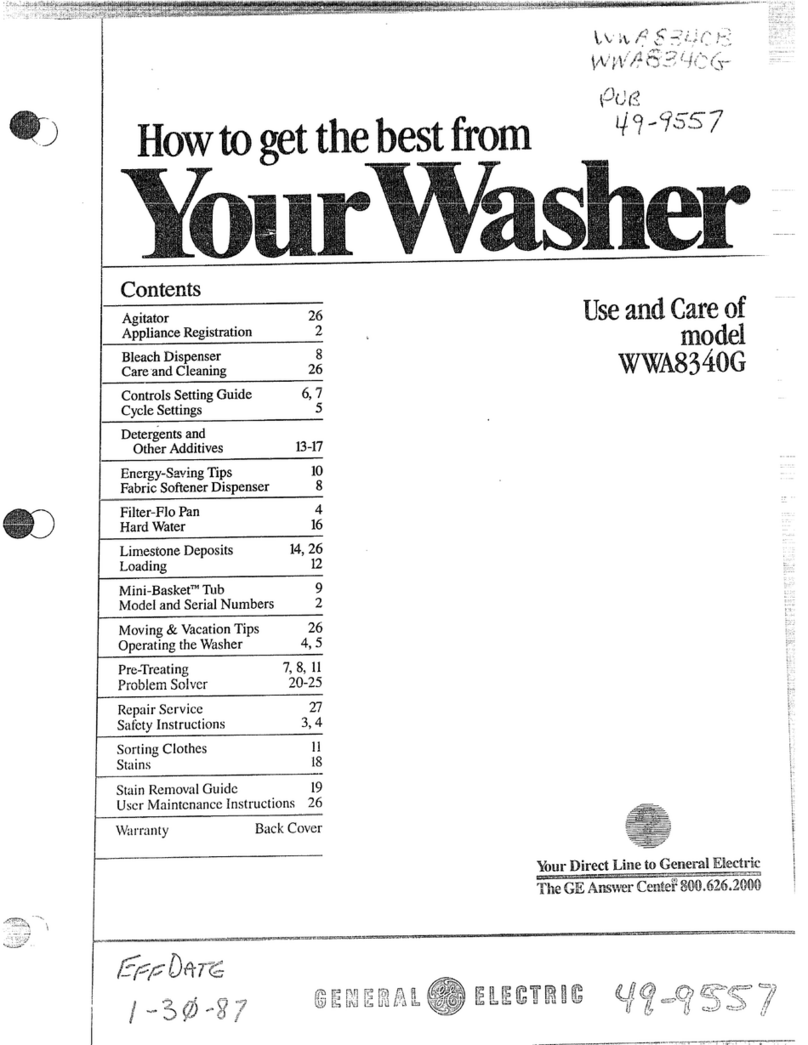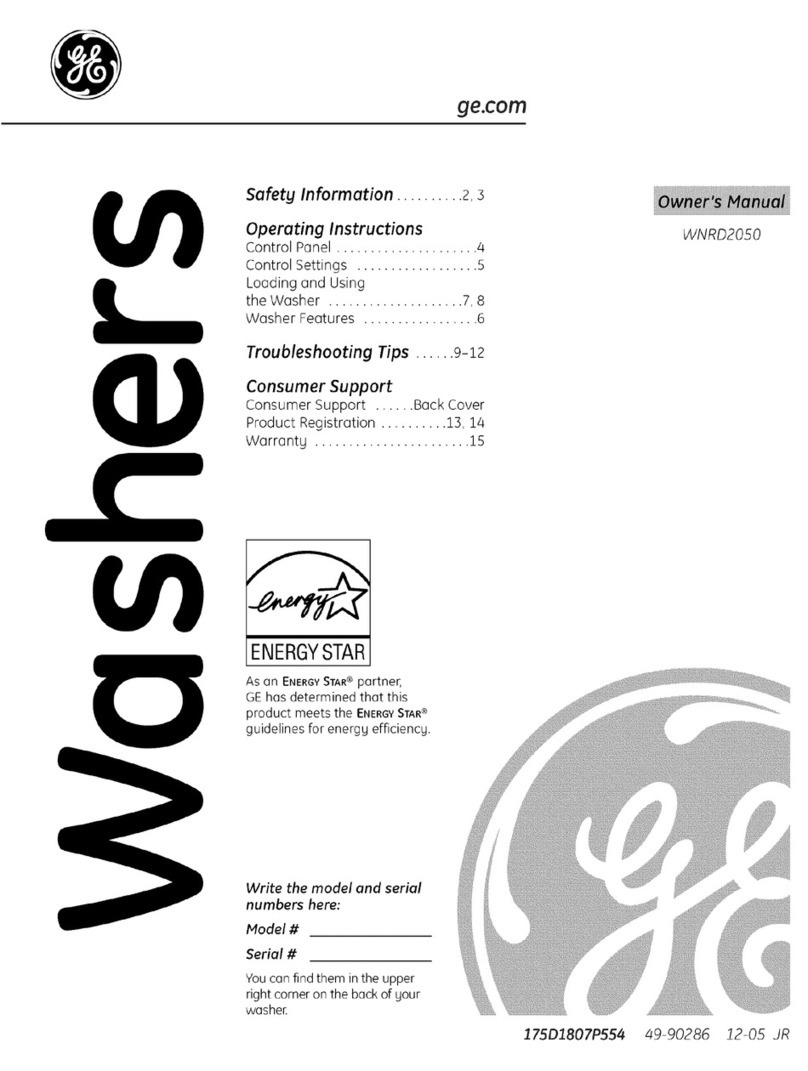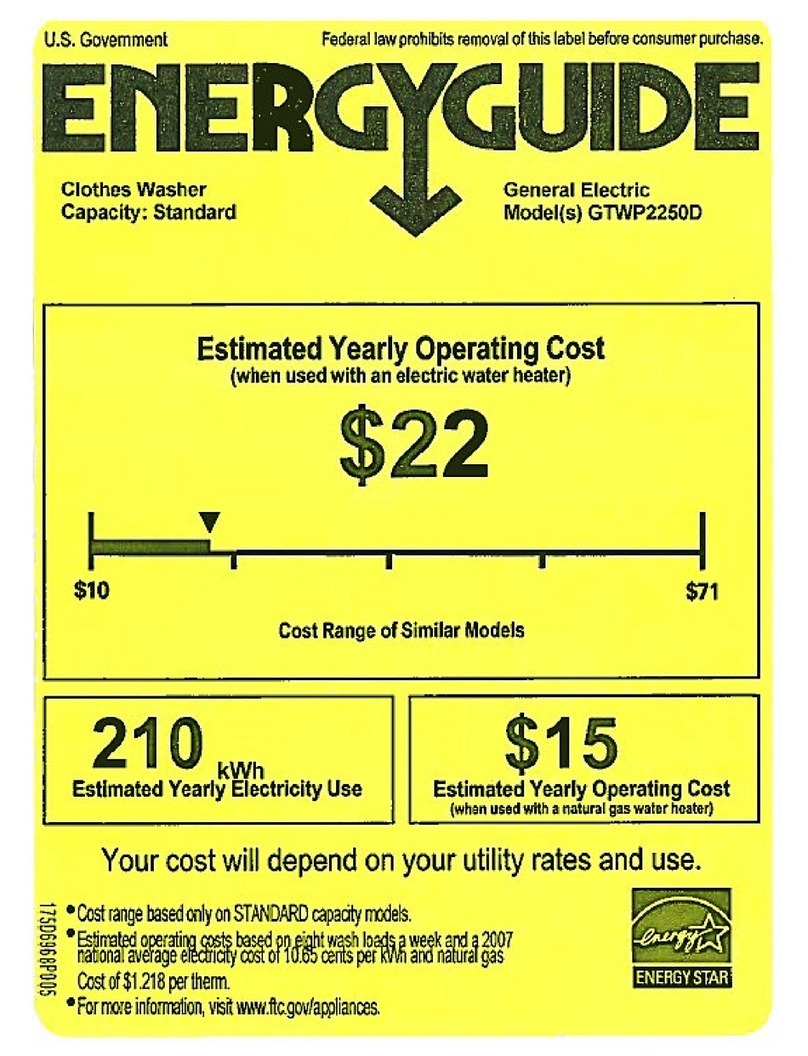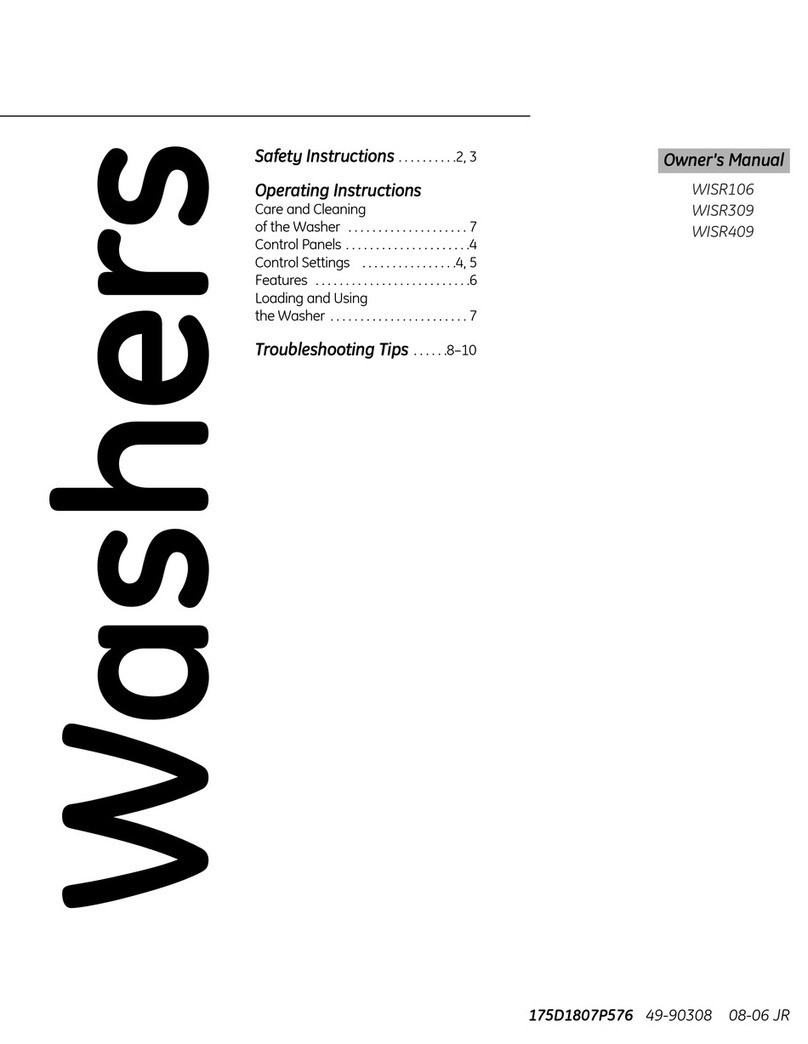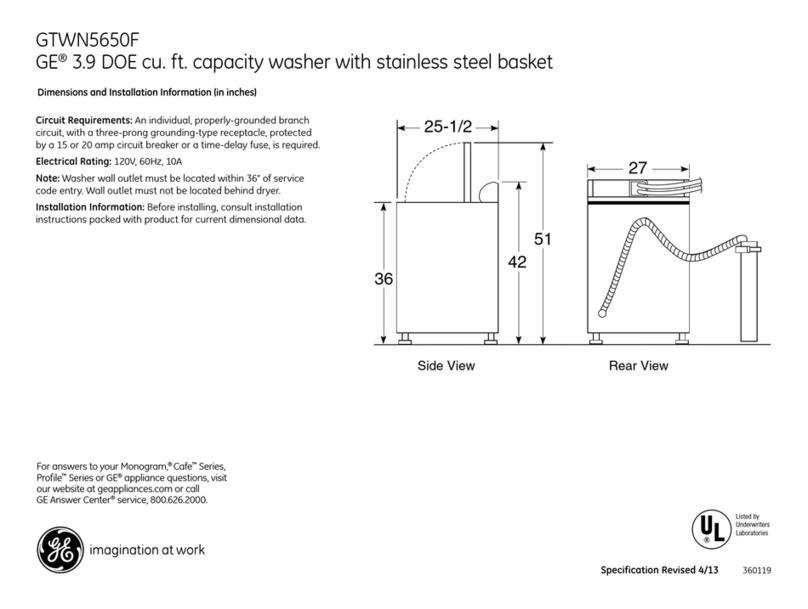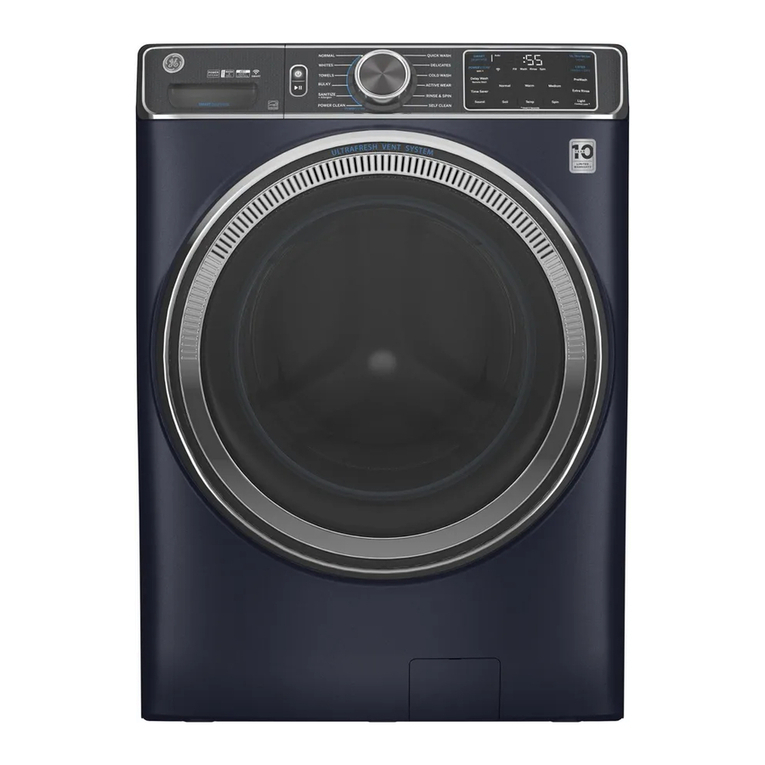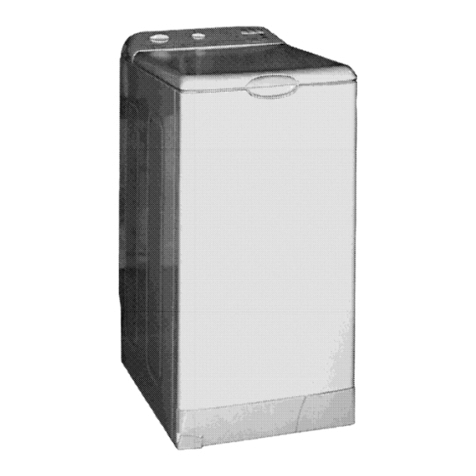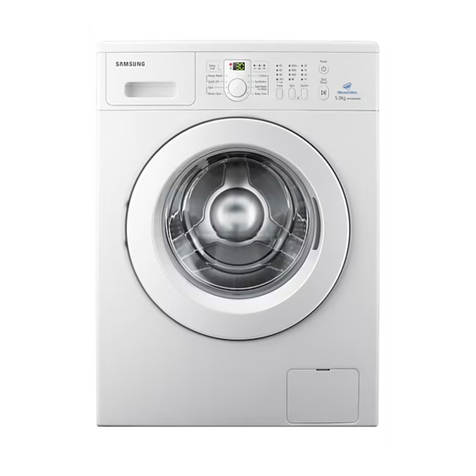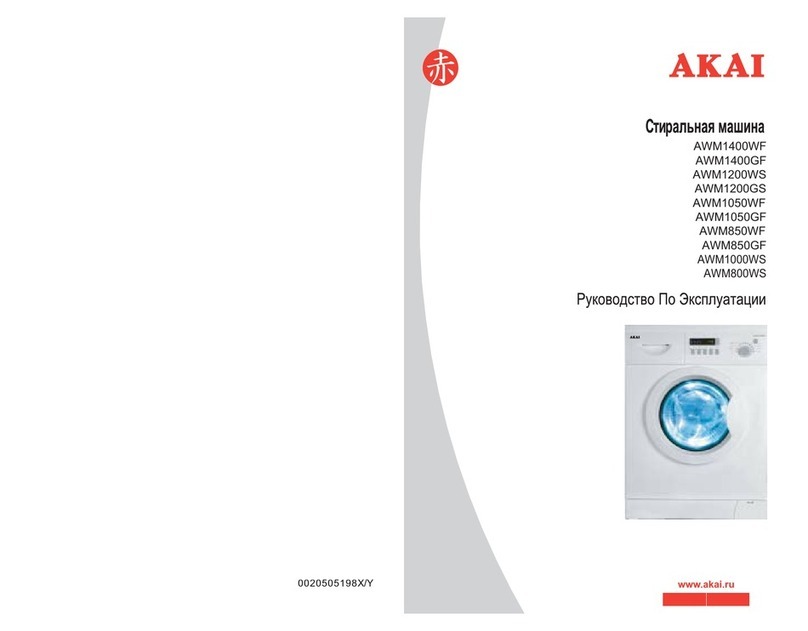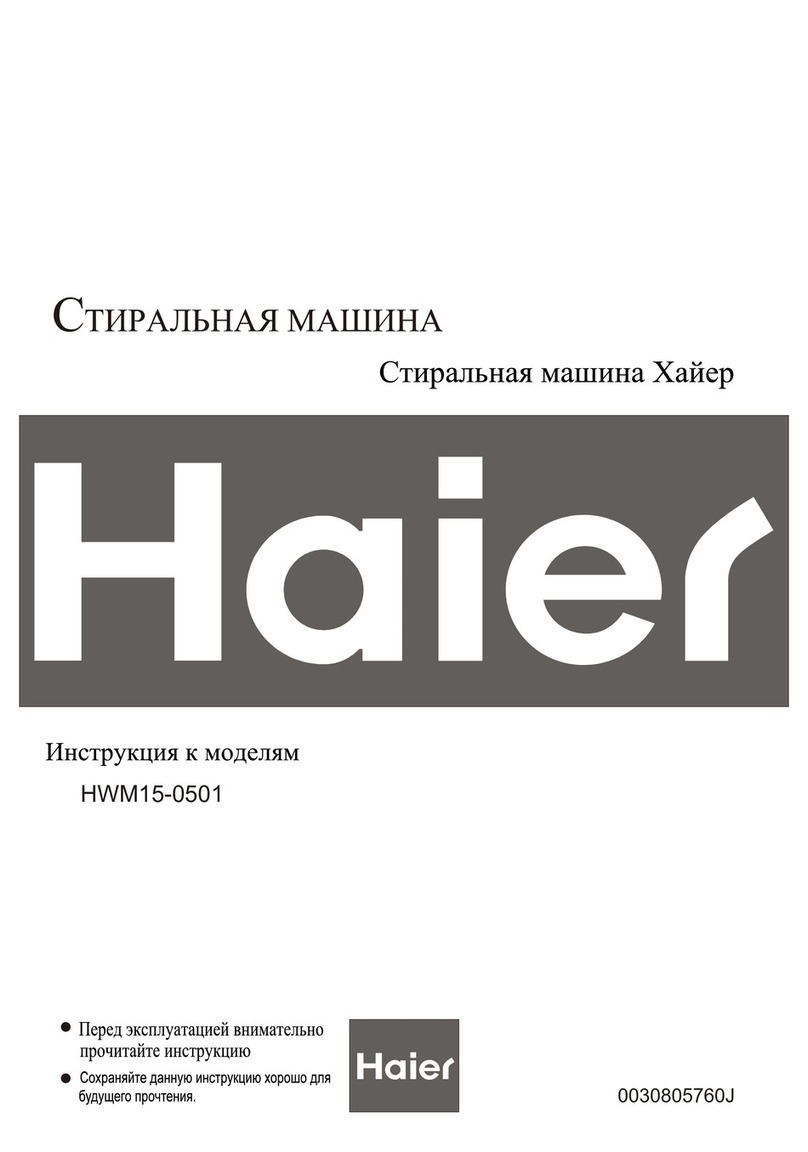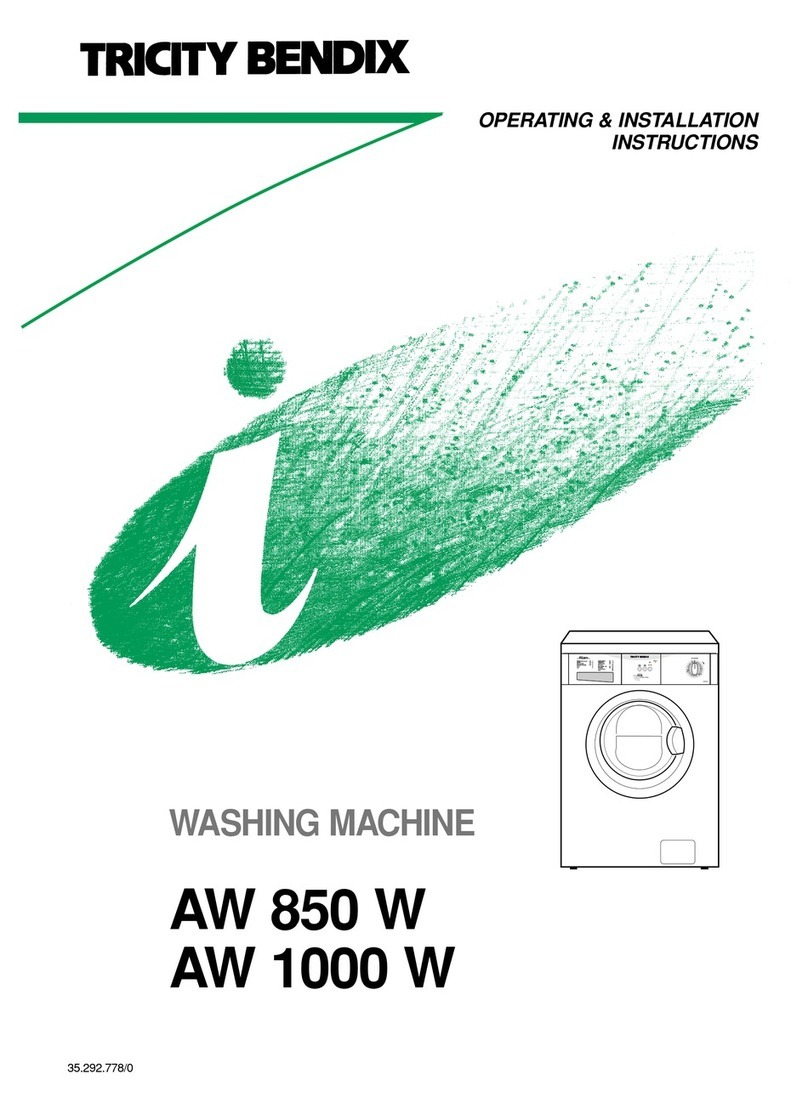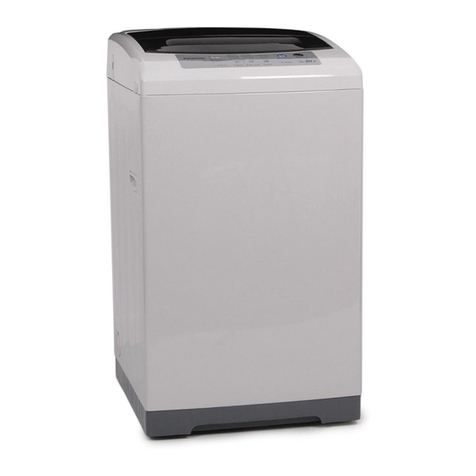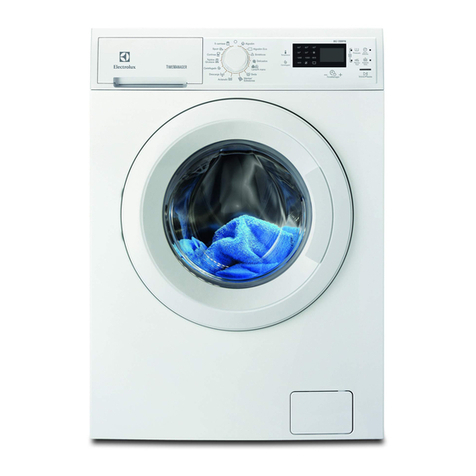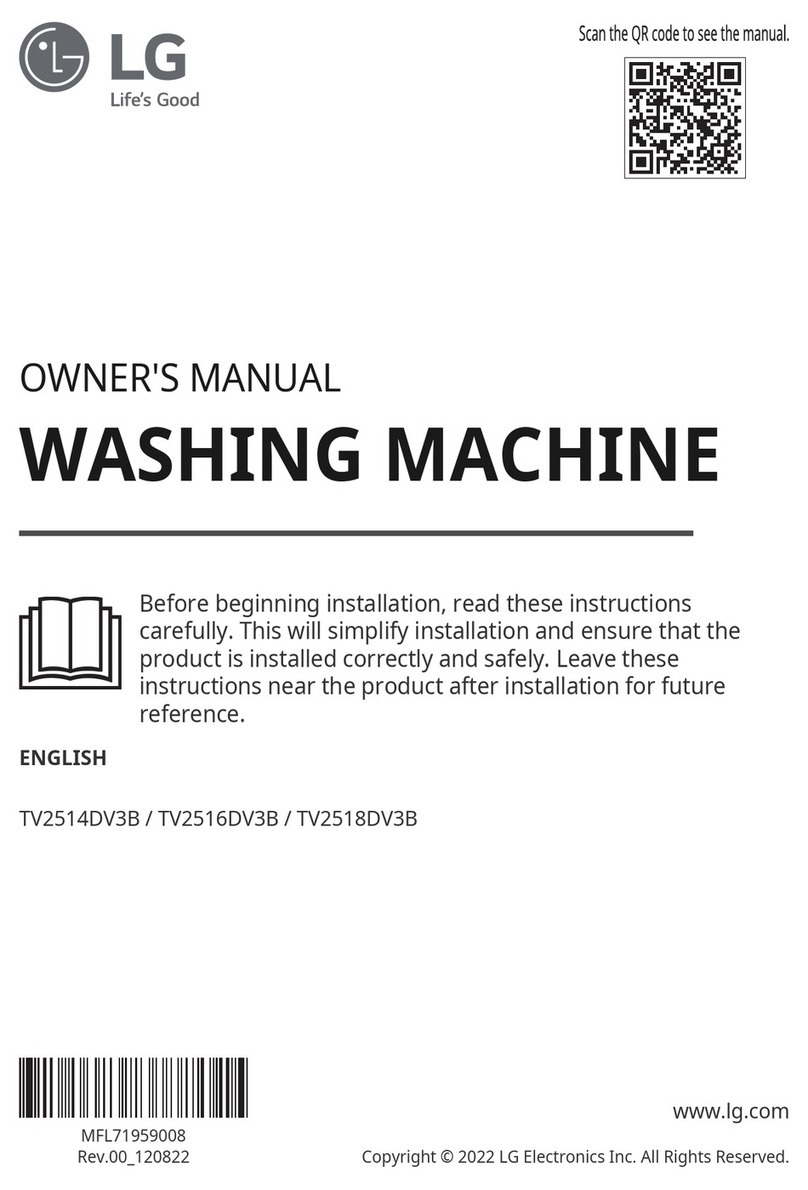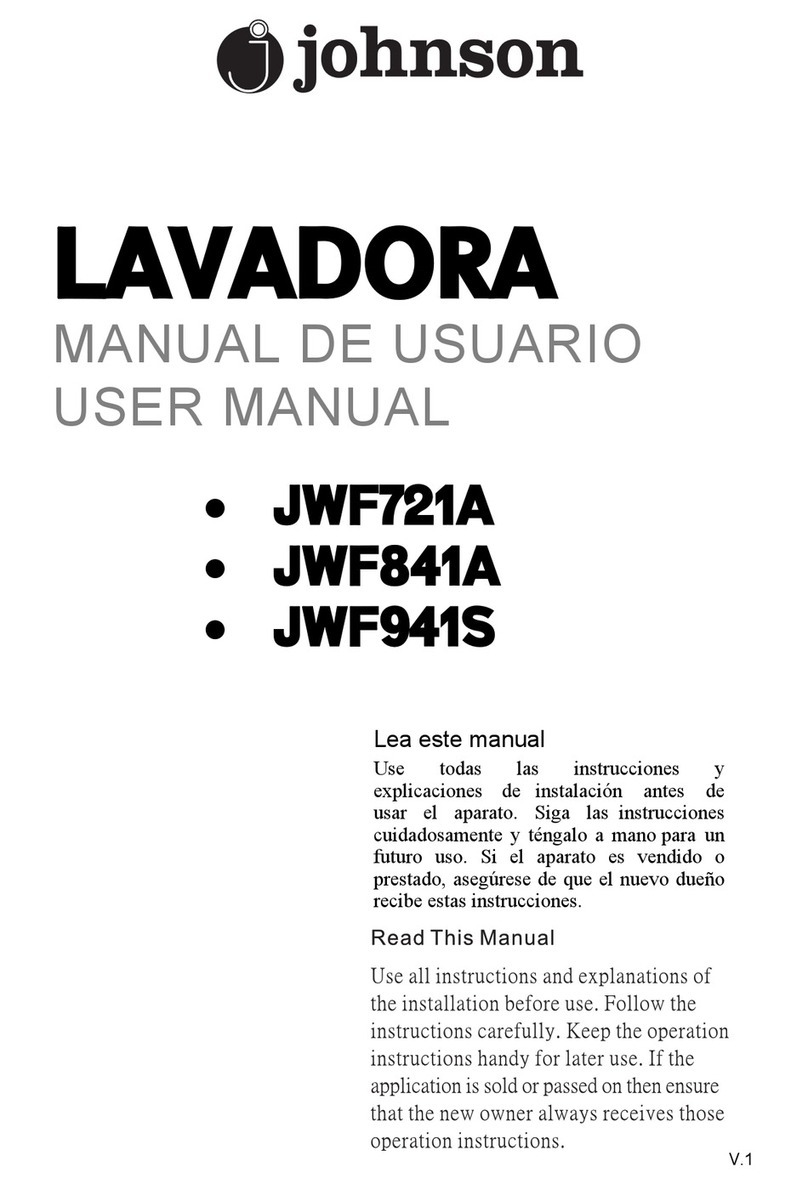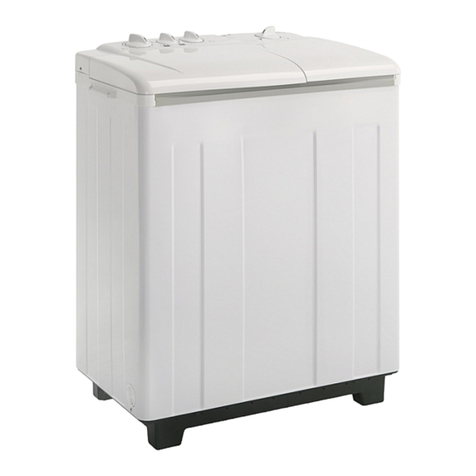Consumer Support
Troub eshooting TipsOperating InstructionsSafety Instructions
3
Use this
a liance
only for its
intended
ur ose as
described in
this Owner’s
Manual.
www.Hotpoint.com
WHEN USING THE WASHER
■Never reach into washer while it is moving.
Wait until the machine has completely stopped
before opening the lid.
■Do not mix chlorine bleach with ammonia or acids
such as vinegar and/or rust remover. Mixing
different chemicals can produce a
toxic gas which may cause death.
■Do not wash or dry articles that have been
cleaned in, washed in, soaked in or spotted with
combustible or explosive substances (such as
wax, oil, paint, gasoline, degreasers, dry-cleaning
solvents, kerosene, etc.). These substances give off
vapors that may ignite or explode. Do not add
these substances to the wash water. Do not use or
place these substances around your washer or
dryer during operation.
■The laundry process can reduce the flame
retardancy of fabrics. To avoid such a result,
carefully follow the garment manufacturer’s
wash and care instructions.
■To minimize the possibility of electric shock,
unplug this appliance from the power supply
or disconnect the washer at the building’s
distribution panel by removing the fuse or
switching off the circuit breaker before attempting
any maintenance or cleaning.
NOTE: Turning the Cycle Selector Knob to an off
osition, or ressing PAUSE does NOT disconnect
the a liance from the ower su ly.
■Never attempt to operate this appliance if it is
damaged, malfunctioning, partially disassembled,
or has missing or broken parts, including a
damaged cord or plug.
WHEN NOT IN USE
■Turn off water faucets to relieve pressure on hoses
and valves and to minimize leakage if a break or
rupture should occur. Check the condition of the fill
hoses; Hotpoint recommends changing the hoses
every 5 years.
■Before discarding a washer, or removing it
from service, remove the washer lid to prevent
children from hiding inside.
■Do not attempt to repair or replace any part of this
appliance unless specifically recommended in this
Owner’s Manual, or in published user-repair
instructions that you understand and have the
skills to carry out.
■Do not tamper with controls.
READ AND FOLLOW THIS SAFETY INFORMATION
CAREFULLY.
SAVE THESE INSTRUCTIONS
